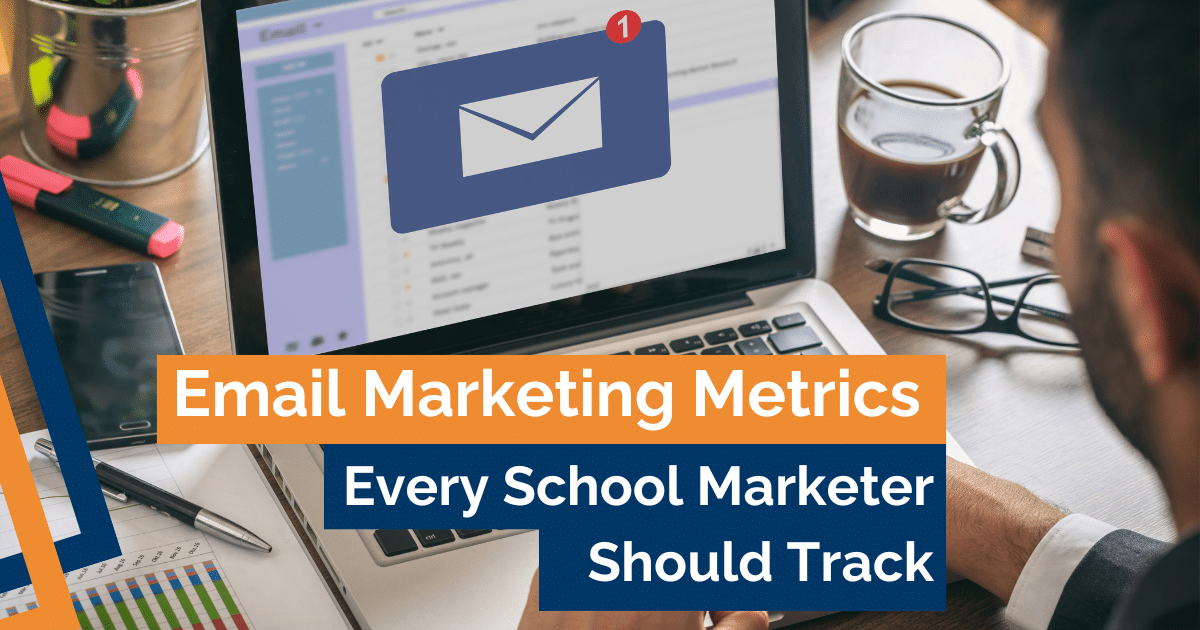Mastering your school email marketing takes time and effort. It requires sticking to best practices for every campaign, avoiding common rookie mistakes, and optimising emails for better engagement.
However, these strategies alone aren’t enough to guarantee success. It’s also important to understand how to measure the results of your efforts.
At Roberts Digital, we’re big advocates about measuring everything. It’s especially true for school email marketing. We believe that if you don’t measure, you won’t know how to improve.
You can use the resources that are available to you such as checking your click-through rates, your open rates, what content is performing well.
What can be measured in school email marketing?
Open rate
Open Rate represents the percentage of recipients who opened an email out of the total number of people who received it.
The open rate can be misleading, especially after iOS 14 changes, making tracking every email open is no longer possible.
Relying solely on this metric for your schools email marketing campaign can lead to unreliable outcomes.
Additionally, the open rate only shows how many people opened your email, not how many actually read it.
How to calculate it:
You can calculate this metric by dividing the number of emails opened by the number of emails delivered, then multiplying the result by 100.
For example, if you successfully sent 801 emails and 77 recipients opened them, you would calculate the open rate as follows: 77 divided by 801 equals 0.0961. Multiply this by 100 to get a 9.61% open rate.
Roberts Digital tip – Improve your email open rates
1. Write an Intriguing Subject Line: Write it like a hyperlink—providing context but leaving some mystery.
2. A/B Test Your Subject Lines: Experiment with different subject lines to see which ones perform better.
3. Send Behaviour-Based Emails: Tailor your emails based on recipient behavior to make them more relevant.
4. Time Your Campaigns Right: Send your emails at optimal times for your audience.
Click-through rate
Your click-through rate (CTR) indicates how engaged your users are with your brand. A good practice is to include one major call-to-action (CTA) link in each email. If a recipient clicks on it, you can infer that they read your email’s content.
Tracking this metric is essential. If recipients click on your CTA, it shows that your content is compelling and that they are interested in your offer and willing to take action.
How to calculate it:
To calculate your CTR, divide the number of clicks your link receives by the number of emails you sent, then multiply the result by 100.
For example, if you sent 1,000 promotional emails and 24 recipients clicked on your CTA (such as a “enrol” button), your CTR would be calculated as follows:
24 clicks / 1,000 emails = 0.024 0.024 x 100 = 2.4%
So, your CTR is 2.4%.
Click-to-Open Rate (CTOR)
Click-to-Open Rate (CTOR) measures how many people click a link after opening your email, unlike CTR, which considers the total number of emails sent.
CTOR is a great metric for evaluating your email campaign’s effectiveness. For example, if your CTR is low but your CTOR is high, it means your content works well for those who open the email, suggesting you need a better subject line to increase engagement. Conversely, a low CTOR indicates that your email content may not be relevant, as recipients are not taking action after reading it.
How to calculate it:
To calculate CTOR, divide the number of link clicks by the number of email opens, then multiply by 100.
For example, if out of 100,000 recipients, 50,000 opened the email, and from those who opened it, 1,000 clicked a link, you would calculate your CTOR by dividing 1,000 by 50,000 and then multiplying the result by 100. This gives you a CTOR of 2%.
A good CTOR typically ranges from 10% to 15%.
List growth
In school email marketing, list growth is a crucial metric. It shows how your mailing list expands over time by comparing the number of new subscribers this month to the number last month.
Analysing metrics like email list growth is the best way to measure the performance of your outreach strategy. More subscribers mean more opportunities to engage with students, parents, and staff, sharing important updates and information.
How to calculate it:
To calculate your list growth rate, subtract the number of unsubscribes from the number of new sign-ups, then divide the result by the total number of subscribers on your list. Finally, multiply by 100.








